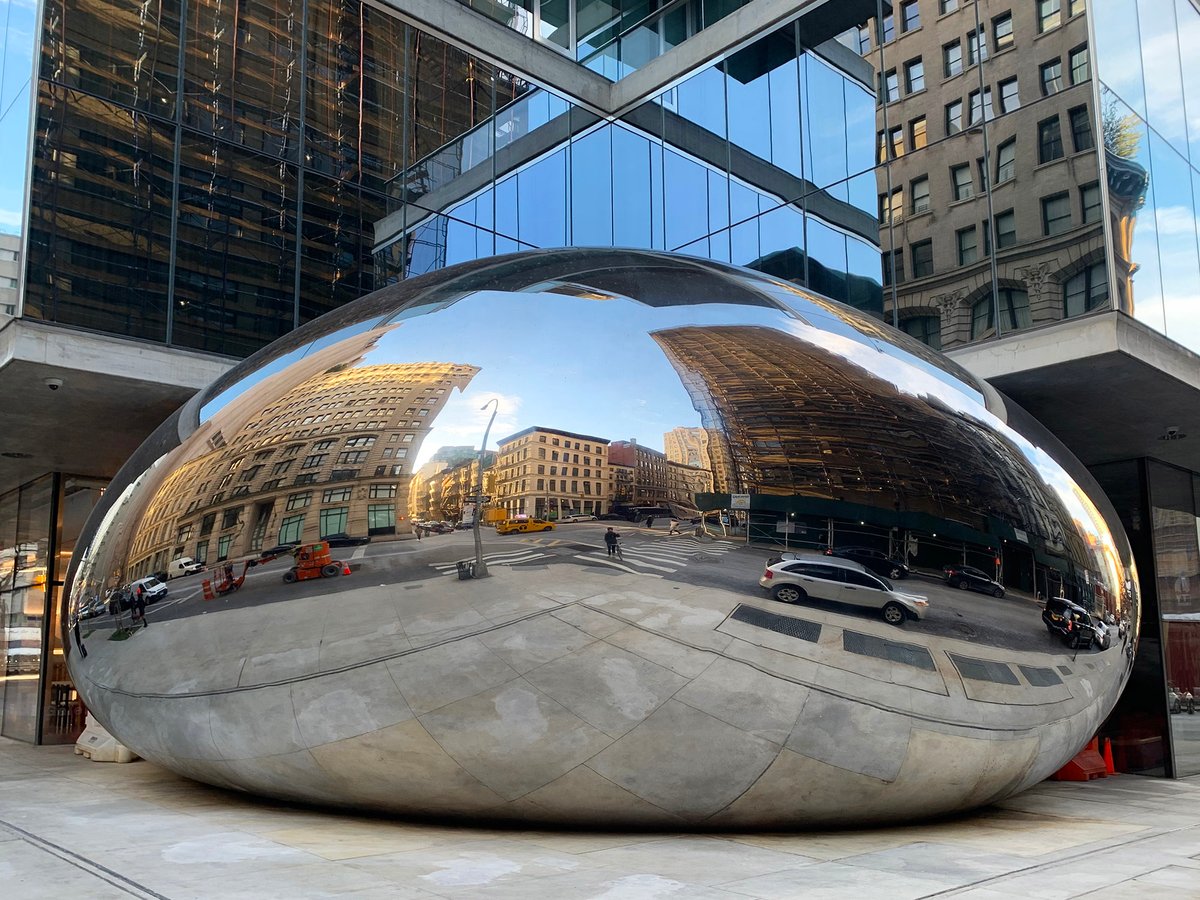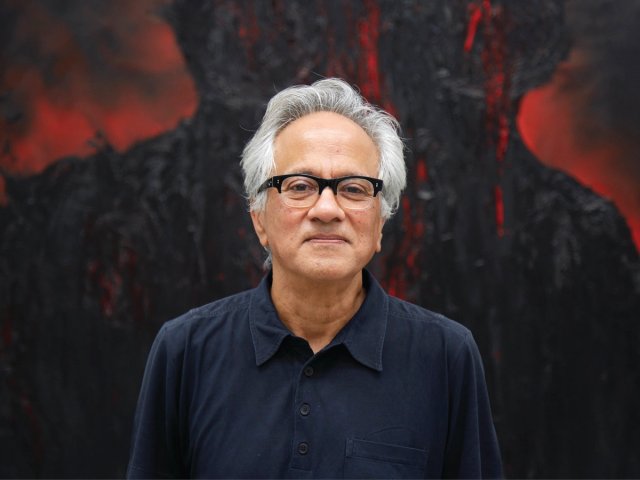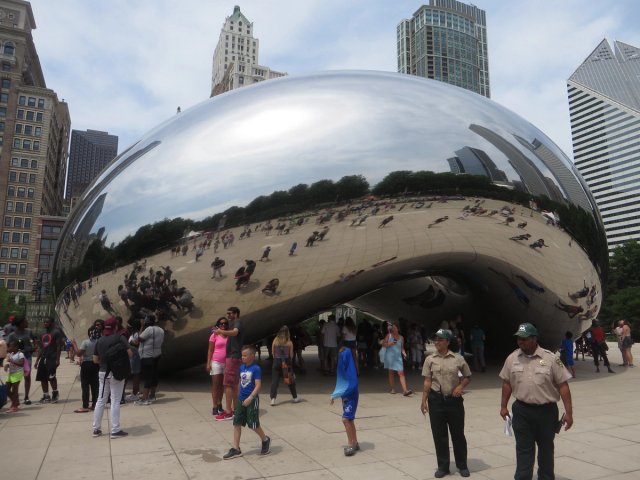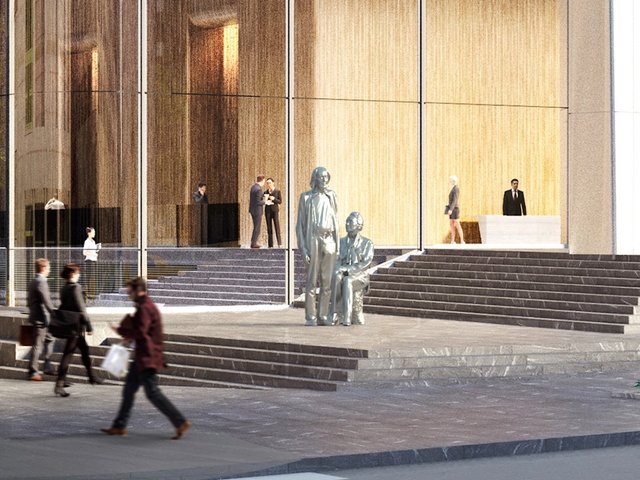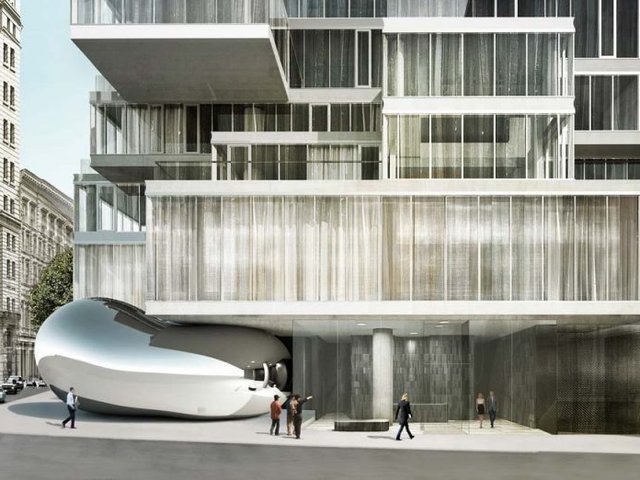A large curvaceous, reflective sculpture by Anish Kapoor that was commissioned for a prominent corner in Lower Manhattan back in 2008 has finally been completed. The yet-to-be-titled work, which shares many formal features with the British artist’s iconic Cloud Gate (2006) sculpture in Chicago—known colloquially as “the bean”—is now shining crisply at the corner of Church and Leonard streets in Tribeca. It is 19ft tall at its highest point and is estimated to have cost between $8m and $10m to create.
Unlike the freestanding Chicago sculpture, which occupies a prominent public plaza in Millennium Park, the new Tribeca bean appears wedged beneath the canopy of 56 Leonard, a luxury condominium building better known as the “Jenga Tower” due to its cantilevering volumes that resemble the game’s dangerously teetering woodblocks. The tower was designed by renowned Swiss architecture firm Herzog & de Meuron (with Hill West Architects serving as executive architect) for real estate development firm Alexico Group, which also commissioned Kapoor’s sculpture. In 2016, the artist bought a condo in the building for $13.6m.
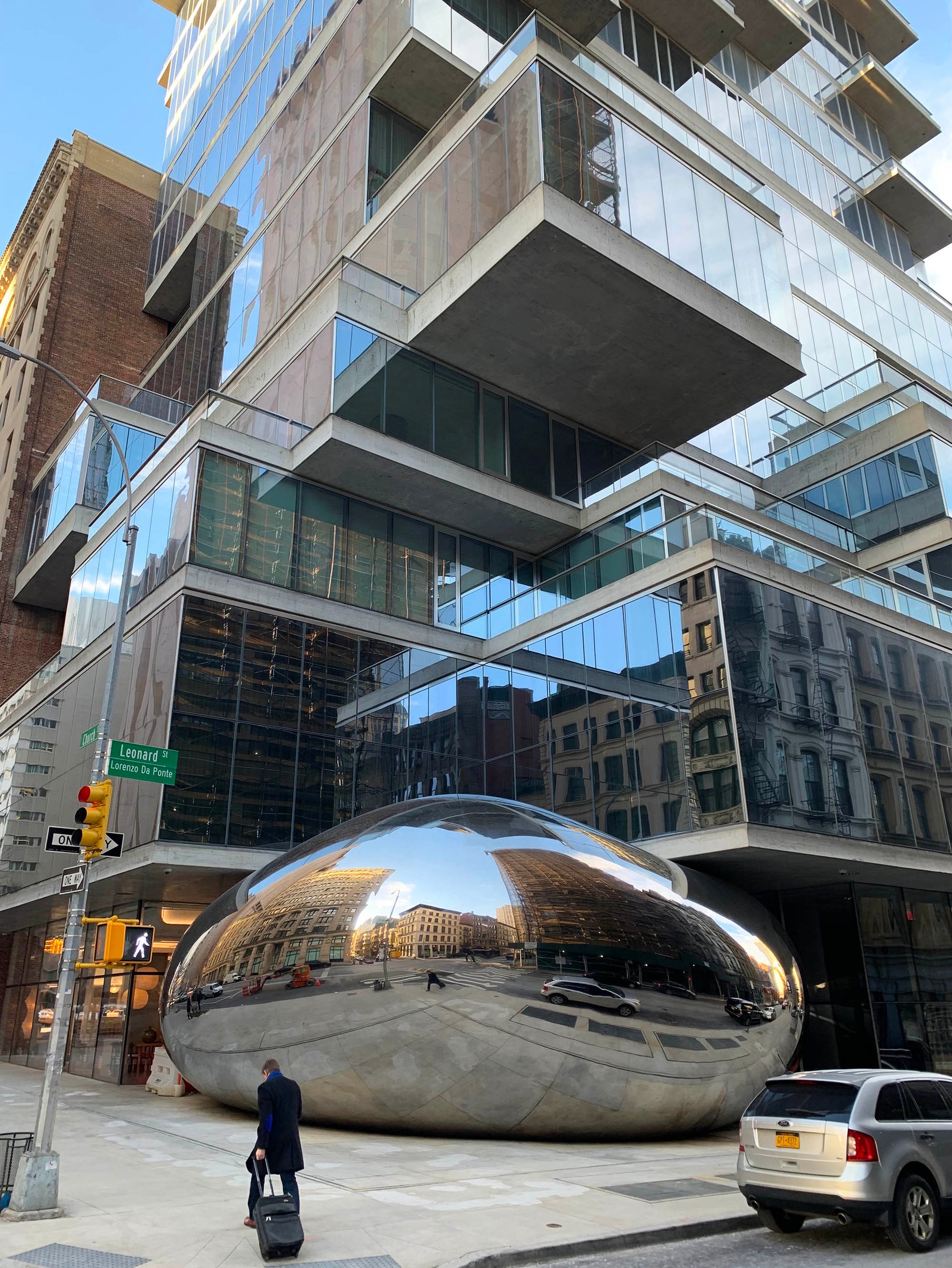
Anish Kapoor's yet-to-be-titled work at the corner of Leonard and Church streets in New York City © Benjamin Sutton
In addition to delays from the construction slowdown following the financial crisis of 2008-09 and later from Covid-19, completion of Kapoor’s Tribeca bean was slowed by its technical complexity. As a result, it sat partially finished for years, surrounded by scaffolding and with large sections of its shimmering shell missing, earning it the nickname "half bean".
In a 2018 message to Alexico Group published by the Tribeca Citizen, the sculpture’s fabricators, Performance Structures, outlined the enormous logistical and technical challenges involved in Cloud Gate, and how the Tribeca bean differed from that project both in its assembly and its installation.
“In order to make the Leonard Street sculpture installation more expeditious, and to save costs, it was decided to build the precision components such that they could be tightly fit together, with the seams thereby becoming nearly invisible hair line cracks,” the message reads in part.
“Another significant difference between the Leonard Street sculpture and Cloud Gate is the suspension system,” the fabricator’s explanation continues. “Instead of a single large support frame, each slice has its individual support frame. The support frames for the bottom slices are each bolted to the plaza, and the slices themselves are suspended by means of cables. When completed, the entire sculpture will be suspended with a system of cables and spring members so that it will be able to move slightly with changes of temperature and wind and snow loads.”
One unintended benefit of the Tribeca bean’s enormous delays is that it now sits in the middle of one of New York’s main gallery districts—a selfie-friendly beacon for the art-lovers criss-crossing the neighbourhood.


